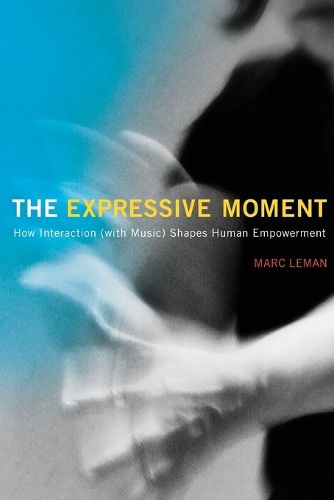Readings Newsletter
Become a Readings Member to make your shopping experience even easier.
Sign in or sign up for free!
You’re not far away from qualifying for FREE standard shipping within Australia
You’ve qualified for FREE standard shipping within Australia
The cart is loading…






This title is printed to order. This book may have been self-published. If so, we cannot guarantee the quality of the content. In the main most books will have gone through the editing process however some may not. We therefore suggest that you be aware of this before ordering this book. If in doubt check either the author or publisher’s details as we are unable to accept any returns unless they are faulty. Please contact us if you have any questions.
A new way to understand expressive interaction, focusing on the dynamic, fast, pre-reflective processes underlying interactions with music.
The expressive moment is that point in time when we grasp a situation and respond quickly, even before we are aware of it. In this book, Marc Leman argues that expression drives this kind of interaction, and he proposes a general framework for understanding expressive interactions. He focuses on the dynamic, fast, and pre-reflective processes underlying our interactions with music-whether we are playing an instrument, dancing, listening, or using new interactive technologies. Music offers a well-established domain for studying these fast and interactive processes, and Leman argues that understanding the power of expressive interaction through music may help us understand cognitive processing in other domains, including language, human action coordination, human-animal interaction, and human-machine interaction.
Leman regards expressive interactions with music as energizing and empowering. He argues that music is based on patterns that intervene with a reinforcing loop in the human brain, strengthening learning, motivation, and reward. He argues further that the reinforcing effect is influenced by the interaction flow, by fast processes that handle expressive qualities on the fly.
Leman sets out the framework in which expressive interaction is situated, describing, among other things, a pragmatic model of communication in which the fundamental components are enactment and dynamics. He looks in more detail at the cognitive-motivational architecture, discussing sensorimotor and motivational schemes. Finally, he discusses applications for the concepts behind expressive motivation in such fields as sports, entertainment, rehabilitation, multimedia art, and music education.
$9.00 standard shipping within Australia
FREE standard shipping within Australia for orders over $100.00
Express & International shipping calculated at checkout
This title is printed to order. This book may have been self-published. If so, we cannot guarantee the quality of the content. In the main most books will have gone through the editing process however some may not. We therefore suggest that you be aware of this before ordering this book. If in doubt check either the author or publisher’s details as we are unable to accept any returns unless they are faulty. Please contact us if you have any questions.
A new way to understand expressive interaction, focusing on the dynamic, fast, pre-reflective processes underlying interactions with music.
The expressive moment is that point in time when we grasp a situation and respond quickly, even before we are aware of it. In this book, Marc Leman argues that expression drives this kind of interaction, and he proposes a general framework for understanding expressive interactions. He focuses on the dynamic, fast, and pre-reflective processes underlying our interactions with music-whether we are playing an instrument, dancing, listening, or using new interactive technologies. Music offers a well-established domain for studying these fast and interactive processes, and Leman argues that understanding the power of expressive interaction through music may help us understand cognitive processing in other domains, including language, human action coordination, human-animal interaction, and human-machine interaction.
Leman regards expressive interactions with music as energizing and empowering. He argues that music is based on patterns that intervene with a reinforcing loop in the human brain, strengthening learning, motivation, and reward. He argues further that the reinforcing effect is influenced by the interaction flow, by fast processes that handle expressive qualities on the fly.
Leman sets out the framework in which expressive interaction is situated, describing, among other things, a pragmatic model of communication in which the fundamental components are enactment and dynamics. He looks in more detail at the cognitive-motivational architecture, discussing sensorimotor and motivational schemes. Finally, he discusses applications for the concepts behind expressive motivation in such fields as sports, entertainment, rehabilitation, multimedia art, and music education.